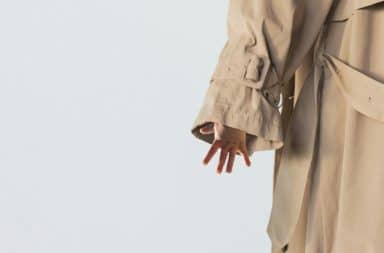Greetings, my name is Otto von Legroom, and I am the world’s most famous office floor plan designer. The cubicle? That was me. The open office? That was me too. I’ve been doing this job so long I still remember when employees had dignity. I had just left prison design school, and I was anxious to make a name for myself. I was waiting for an interview in the lobby of a prestigious architecture firm when it hit me: these people have way too much personal space. I left the interview and started designing.
The next week I had a prototype for the cubicle.
Managers loved them, but after several million angry letters, I knew I could improve on my design. Perhaps if I read the letters, I would have done a better job on my next project: the open office. My takeaway from people’s hatred of cubes wasn’t that they felt dehumanized or trapped, it was that people felt they had way too much privacy. I fantasized about a world where everyone would notice if someone got up to use the bathroom. I decided my next design would tear down the walls and open up offices for collaboration. Everyone knows that to get things done, you must collaborate with everyone at all times without any breaks for actual work. Still, the complaints kept coming.
With this in mind, I’m excited to share my latest innovation in office design: a crowded dirt floor with no furniture.
The S.H.E.D. System
It’s all part of a design system I call “Symbiotic Habitation via Environmental Design,” or SHED. It’s also called SHED because it’s basically just a shed, like the kind you’d buy at Home Depot (although we like to call them “innovation pods”). Each 8′ x 4′ “pod” comes with plastic walls, a plastic roof, and literally nothing else. Best of all, each SHED can fit roughly 10 adults, or 22 interns.
The SHED system is a perfect response to how people work today. We noticed many workers prefer standing desks, so we got rid of chairs completely. It was around this time we realized workers couldn’t complain about being “chained to their desks” if the office didn’t have desks, so we got rid of those too. Another common criticism of the open office is that there are too many distractions. To fix this, we stripped each SHED of all decorations and windows.
If that wasn’t enough, we also made it so the innovation pods can’t be opened from the inside. This way, there’s no reason workers can’t focus on the task at hand. Simply drop employees off, lock the door, then check up every few weeks to deliver water and hardtack. Every innovation pod comes with a special door that’s large enough for passing files, but small enough that the employees can’t escape. Employees go in, work (and only work) comes out. It’s that simple.
Key Innovations
To address the open office’s problem with privacy, we encourage management to ban any and all talking. Now, you might say that this makes collaboration a challenge, but it’s not a problem. Simply force your employees to download roughly 18 different messenger apps, productivity trackers, and ticketing systems to communicate and keep track of their work. That way, everything your workers say or think is on file for management’s perusal. That’s what I call privacy!
Speaking of management, the SHED design keeps bosses in mind every step of the way. Whether your company uses a traditional hierarchy, or a flat hierarchy where every employee is on the same level (but the CEO and his buddies make all the decisions anyway), the SHED system is for you. By cramming workers into tiny plastic boxes, there’s more room for executive offices, racquetball courts, and expansive conference rooms that get used once a month.
Thinking Inside the Box
The SHED system is the result of tons of hard work. Like all of my projects, I started with research. Our research shows that workers are the happiest and most productive when they have privacy, freedom, and personal space. Unfortunately, the research also shows that such an office would be really expensive. Most importantly, it wasn’t what CEOs wanted to hear. Knowing this, we threw out the research and designed the absolute cheapest floor plan we could imagine. Then we hired a crack team of marketers and PR experts to make the SHED system seem hip and fresh.
Early on, I was inspired by the natural teamwork displayed by wild packs of wolves. Specifically, I was inspired by the pack of wolves that attacked the inhabitants of an early innovation pod prototype in my backyard. I’ll be damned if those wolves didn’t kill every last worker! The wolves didn’t need fancy tables and chairs to work together, so why should humans?
The Way You’ll Work Tomorrow
If you read the headlines, you might think that automation is coming for everyone’s jobs, but people are here to stay. The trick to adapting to this new age of work isn’t teaching machines to think like humans, it’s teaching humans to think like machines. In the end, it turns out the real secret to productivity isn’t passion, it’s grey plastic, no windows, and a constant state of fear.
Stay tuned for my new, innovative approach to airplane cabins!


